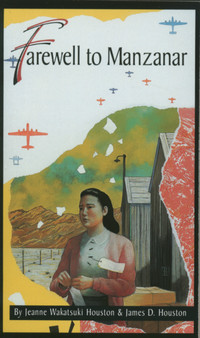I realize that while my world of novels and books will always be there to entertain and enlighten, we are on riding the wave of a graphic revolution.
We have, we use, and we are bombarded with images everywhere. And we increasingly need these images to better communicate and convince.
We see and seek images everywhere. From product identification and safety directions, to illustrations / art in blogs and in books. When we communicate via email in short verbal bursts and often include icons to better express ourselves :-)
While this 'revolution' has been around for a while it has only recently hit me how extensive it is. I now LOVE graphic novels, instructions are graphic, and road signs use more and more images to convey information.
GRAPHICS AND LITERACY:
Since reading my first graphic novel last year (Joe Kelly's I Kill Giants), I have read numerous outstanding educational graphic novels for kids - chalk full of extensive vocabulary, well-written dialogue, exquisitely inviting art, and exciting stories of fiction and nonfiction, science and technology, history, social conflict and the search of identities.
 I have also learned that graphic novels are the fastest selling format of kids' books, and find myself the author of a book on how to integrate graphic novels into middle school curriculum. Major publishers have now set up graphic novel divisions and while Barnes & Nobles don't quite know how to shelve them yet, they're out there!
I have also learned that graphic novels are the fastest selling format of kids' books, and find myself the author of a book on how to integrate graphic novels into middle school curriculum. Major publishers have now set up graphic novel divisions and while Barnes & Nobles don't quite know how to shelve them yet, they're out there!Furthermore, librarians have realized that graphic novels bring kids and young adults back into libraries, and that graphic novels are bringing kids back to books and reading! Graphic novels literally illustrate the art of story-telling.
GRAPHICS IN THE REAL WORLD:
We use graphic images in everything thing we do. We have visual icons that relay safety messages and product information. We use them to cross the street. We use them to advertise. We use them in presentations. We use them to convince.
Look at your favorite blogs. I don't know about you, but I favor some visual support when reading them. The images are inviting, they help break up the screen, and they add a dimension to the message.
AS PRODUCTS GO GLOBAL - INSTRUCTIONS GO GRAPHIC:
 Because so many of our products come from other countries or are sold world wide, instructions must be universally understood. While some companies will provide written instructions / warnings in multiple languages, many are instead simply going graphic!
Because so many of our products come from other countries or are sold world wide, instructions must be universally understood. While some companies will provide written instructions / warnings in multiple languages, many are instead simply going graphic!It's this last point that really got me to this graphic revolution point!
My daughter just moved to Boston where she started work on Monday. We went to Ikea to furnish her apartment and found ALL the directions were purely graphic!
The thing is that as bright as we both are (she graduated with honors from Williams College, I have a PhD and graduated from an ivy league school)...the directions were really hard to follow. There were times we just didn't quite "get" what went where. Here's just one page:
THE BOTTOM LINE:
- Communicating with images is here to stay!
- We as concerned parents and educators must teach our kids to "read" images
- The International Reading Association (IRA) and the National Council of Teachers of English (NTCE) have included in their standards that "Students read a wide range of print and non-print texts"
We should never abandon our classics. I love teaching Mary Shelley's Frankenstein and Andrew Clemen's Frindle, but we also have to teach kids how to use Power Point, how to read graphic instructions/directions, and how to tell stories with graphic images, even how to "read" faces. Hence, enter graphic novels - a wonderful bridge for both worlds.
SOME SUGGESTIONS FOR TEACHING GRAPHIC INTELLIGENCE:
- Include graphic novels in your reading repertoire and in your read aloud repertoire with your kids.
- Focus on learning to read the details in illustrations.
- Talk about advertising icons - why do you thing a company / advertisers chose a particular image? Was it effective?
- Talk about art, the use of color, the use of particular shapes...what these images portray...what emotions they evoke.
- Discuss design choices for school projects, for homemade cards, for household products...
- Turn commercial time into a cognitive puzzle: Talk about your favorite/least favorite commercials. What do you like about them? What do you hate about them? (Here are two of my favorites - one serious [and notice - no words], one that made me laugh)
I am curious - how much have graphic images invaded your worlds? How do you help teach your kids to cope with the images they're bombarded with? How do you cope? Please let me know in your comments!
















